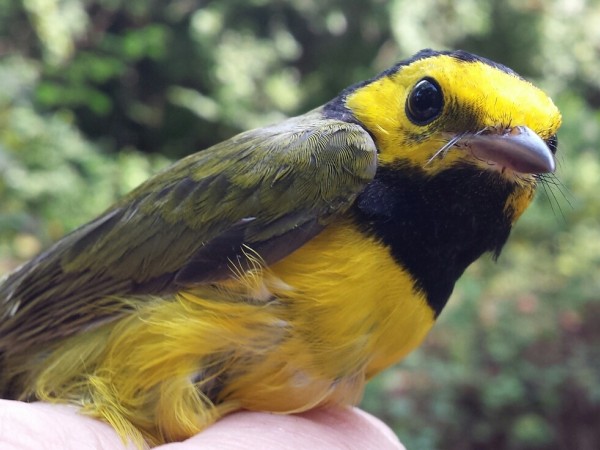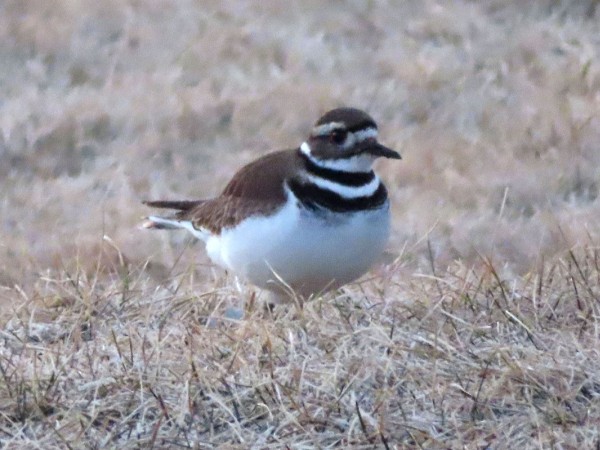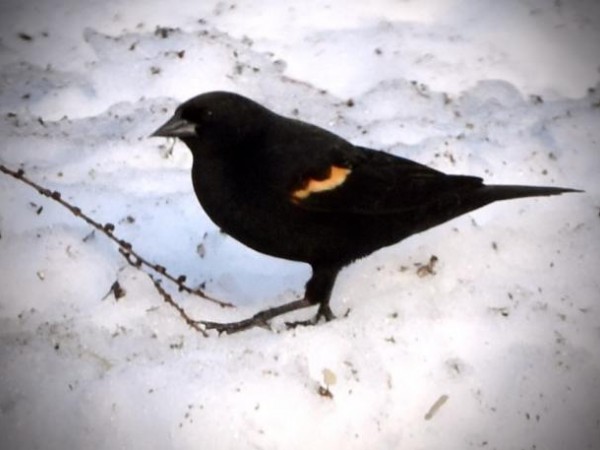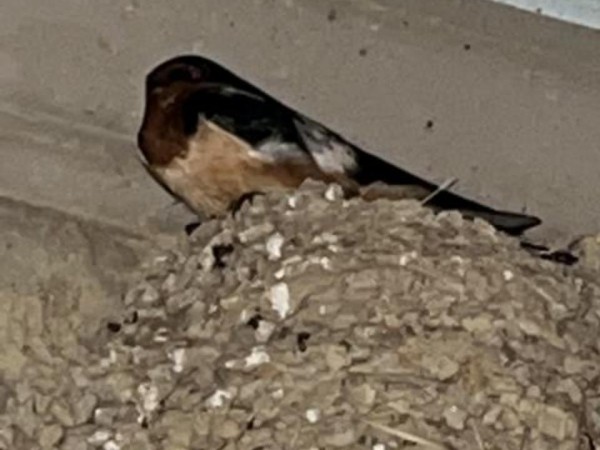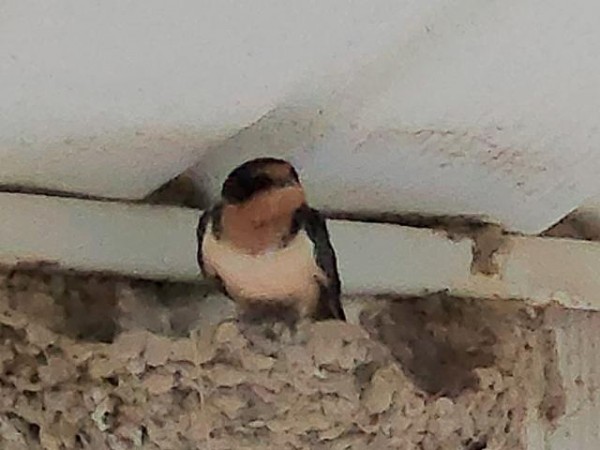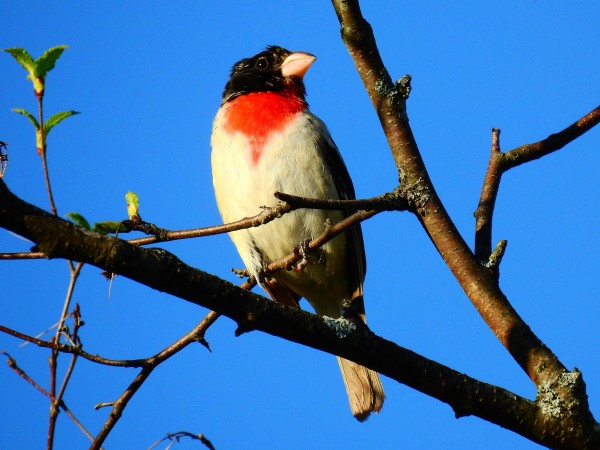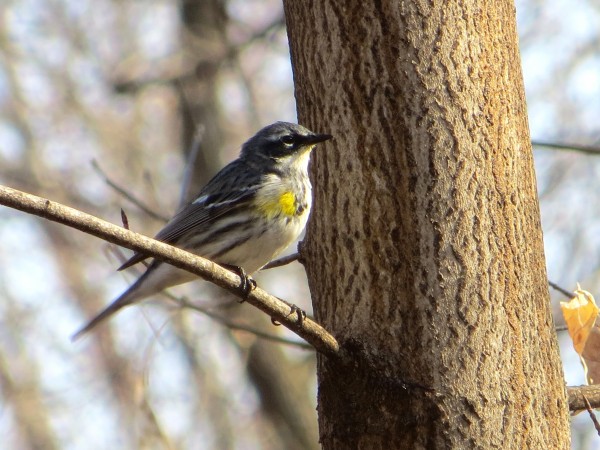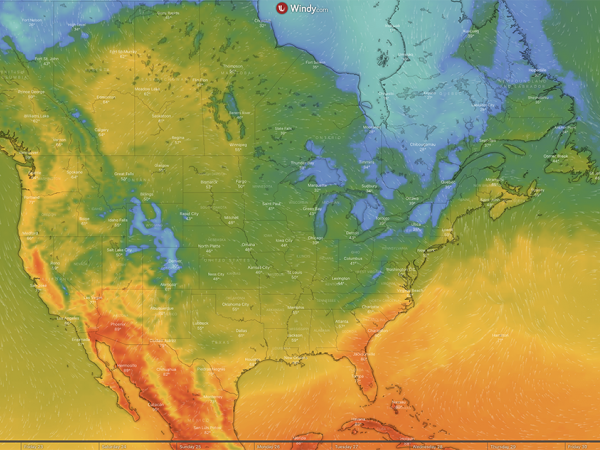New Arrivals
Spring is here and more birds are on the move. Dr. David Aborn provides an update on migration throughout the U.S. And Chuck Henrikson shares his latest birding report from Journey North's home base, the UW–Madison Arboretum. What birds are you noticing?
Weather Forecasts for Migrating Songbirds
April is approaching. What migratory birds is Dr. Aborn observing? And how is weather impacting migration?
"While there hasn’t been a lot of activity across the country this week, migration is starting to pick up. Strong southerly winds have helped bring a handful of migrants into the southern parts of the U.S. . . . Migration is starting to pick up a bit in the Western U.S. as well . . . Looking at the weather map, there is a strong storm system moving across the country, bringing heavy rains and poor flying weather."
Read more of Dr. David Aborn's 2022 Weather Forecasts for Migrating Songbirds #2»
Chuck Henrikson’s Birding Report
What new arrivals is Chuck observing? Find out in his latest birding report from Journey North’s home base, the UW–Madison Arboretum.
"Last Tuesday when I arrived at the Visitor Center parking lot at 6:55 am there was a bird standing motionless in the grass next to the parking lot. It had its back to me so I wasn’t sure what it was but I did have an idea . . . Finally it turned toward me so that I could see the two black stripes on its neck. It was a Killdeer. I don’t think I’ve ever seen a Killdeer in that location before."
Read more of Chuck Henrikson’s birding report #105»
Journey North Species
Red-Winged Blackbird
Journey North volunteers in the Northeast are celebrating the return of Red-winged Blackbirds. Reports of this species remain high.
Kerry in Madawaska, ME: "So very happy to see the arrival of our Red-winged Blackbirds!" (03/18/2022)
Barn Swallow
After a slow start, Barn Swallow migration is picking up. Texas is seeing a bump in numbers, and a few reports are coming from the Southeast.
Gordon in Cullman, AL: "A pair showed up just before dark. Love having them around. Still waiting on first hummingbird. Makes me so thankful for life." (03/21/2022)
Kathy in Morris Chapel, TN: "Female has now also returned to her nest with the male that arrived in 03/20/2022. Still ahead of the Ruby-Throats." (03/21/2022)
Lori in Round Rock, TX: "Four Barn Swallows swooping across our field this morning." (03/21/2022)
Baltimore and Bullock’s Oriole
The Midwest appears to have some early-arriving Baltimore Orioles, and Journey North volunteers are noting their surprise.
Michelle in Indianapolis, IN: "It was surprising to see a male oriole so early in Central Indiana." (03/18/2022)
Joanne in Imlay City, MI: "I saw one male fly over the hook where I usually have his feeder out full of grape jelly . . . I haven't seen anymore since I got the feeder up, but it's early, they will be here soon enough to fill up on grape jelly and oranges."(03/22/2022)
Beth in Sheffield Lake, OH: "We heard him and honed in on the song. It was so cool to see him back so early! We hadn’t even gotten the feeder up yet, it’s up now! Hoping we get more Orioles this year." (03/23/2022)
No new reports of Bullock’s Orioles. If you look at the maps from last year, migration significantly picked up in late April and early May for both Baltimore and Bullock's Orioles. Will this year show the same trend?
Common Loon
Slowly but surely Common Loons are moving north as spring progresses and more ice recedes.
Lori in Prospect, PA: "One adult in breeding plumage and one in non breeding plumage." (03/19/2022)
Report Observations and Include Photos
Report your first observations of Red-winged Blackbirds, Barn Swallows, Baltimore and Bullock's Orioles, and Common Loons. For other species, use the "All Other Signs of Spring" reporting category.
If possible, include photos in your reports (one photo per report). Photos are always helpful to properly identify species and verify reports. However, birds are not always cooperative subjects. One potential workaround is to take a video and then extract a screenshot to use as a photo. Give it a try!




